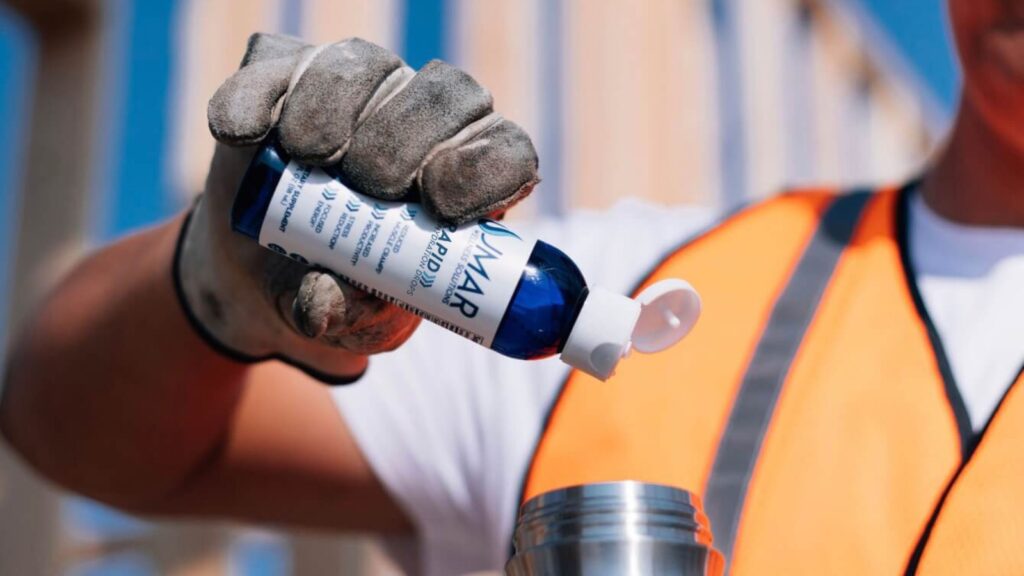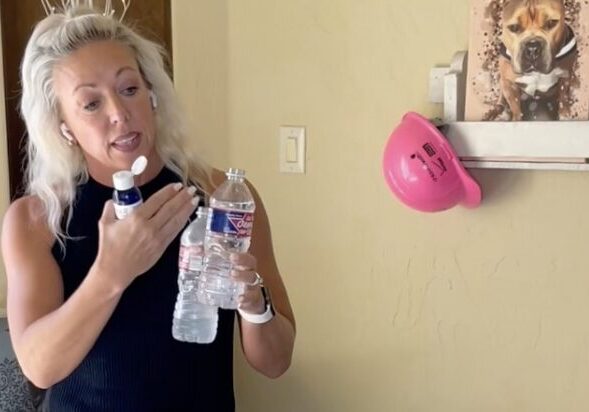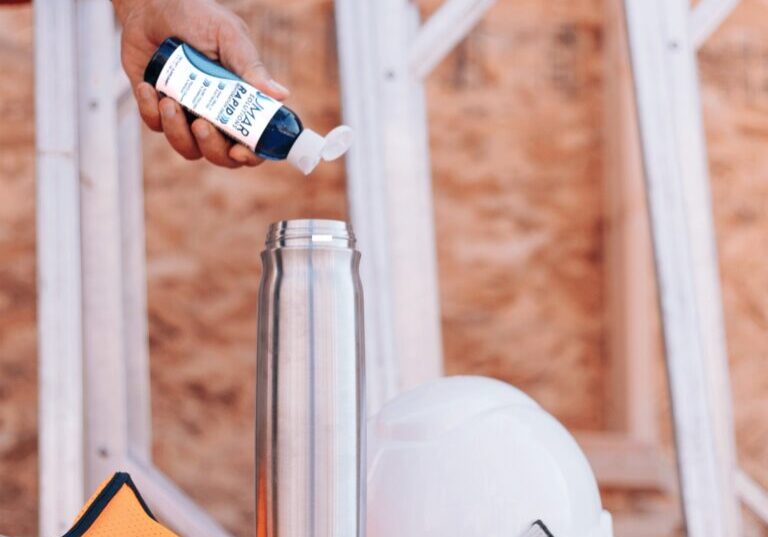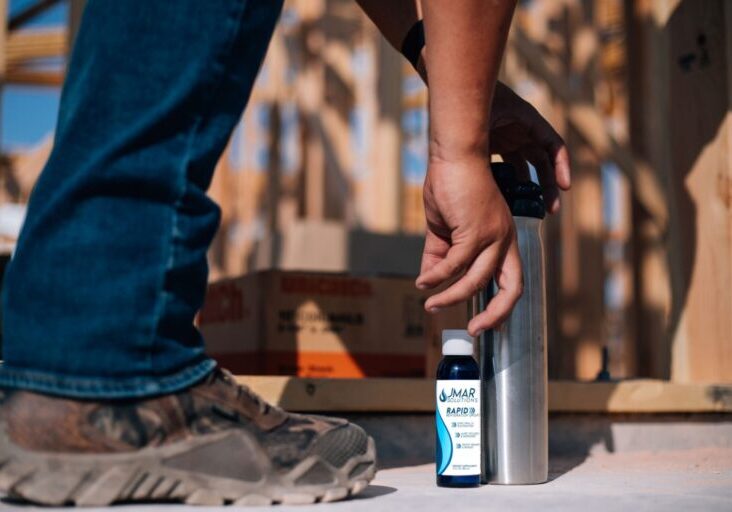How Electrolyte Drinks Solve Hydration Challenges and Keep Workers Safe in the Workplace
Water isn’t enough for workplace hydration.
This statement might shock the safety manager who has spent years instructing construction workers to “stay hydrated” by drinking more water during hot weather.
But what if those well-intentioned directions about water intake are actually making dehydration in the workplace worse?
Every summer, construction sites across America stock pallets of bottled water to address the importance of hydration for workers.
Outdoor workers carry gallon jugs down scaffolding.
Safety briefings emphasize drinking water every 20 minutes.
Yet heat-related incidents still cost the labor industry $100 billion annually, and employees drink gallons without solving hydration challenges.
The problem isn’t insufficient water intake – it’s a fundamental misunderstanding of how proper hydration actually works in the human body and how to maintain proper hydration levels at work sites.
Understanding True Hydration in the Workplace
Hydration in the workplace isn’t about the volume of water you consume – it’s about what your body can actually absorb and use at the cellular level.
When people think about hydration, they automatically think it means water,” explains Jennifer Martinez, founder of JMAR Solutions, industrial electrolyte drops. “But your body runs on minerals, not water. I don’t even like to use the word ‘hydration’ because it creates this misconception that water alone is the solution.”
“When you’re working in heat, when you’re working out, when you’re exerting yourself, you’re losing minerals through your sweat. Those minerals need to be replenished,” Martinez explains. “When you’re sweating, you’re losing minerals. And then when you drink water, you’re diluting what’s left. So that’s why people feel worse when they’re drinking water because they’re already depleted.”
Many workplace health programs miss this critical distinction because they don’t account for the mechanisms that govern true hydration.
Why Hydration Fails
At the cellular level, water doesn’t simply flow into cells passively.
It moves according to strict osmotic gradients controlled by electrolyte concentrations on either side of cell membranes. This process requires specific mineral concentrations, including magnesium, chloride, and purified water, to function correctly.
When construction workers sweat, they lose sodium, potassium, magnesium, and chloride – the very elements that allow cells to absorb and utilize water effectively. What’s missing is the electrolyte balance needed for proper hydration in the workplace.
Water alone won’t solve this problem because they don’t address three fundamental mechanisms of cellular hydration.

How Water-Only Hydration Disrupts Critical Cellular Functions and Threatens Safety in the Workplace
Proper hydration depends on maintaining both adequate water volume AND the correct electrolyte concentrations to support three critical cellular processes. When construction workers rely solely on water to stay hydrated, they unknowingly disrupt these essential functions that are vital for safety in the workplace and optimal productivity.
Membrane Potential Disruption
Every cell in a worker’s body maintains an electrical charge difference of approximately -70mV across its membrane – this is called the membrane potential.
This electrical gradient is crucial for nerve impulses and muscle contractions that keep workers safe and productive. When employees drink only water without electrolyte replacement, they dilute the sodium and potassium concentrations needed to maintain this critical voltage.
Construction workers who drink bottles of water throughout their shift gradually lose the ability to generate proper nerve signals. Their reaction times slow, decision-making becomes impaired, and muscle coordination deteriorates – creating serious health risks in any work environment that prioritizes safety.
The importance of hydration extends beyond water volume to maintaining the electrical systems that power every cellular function.
As workers continue drinking more water without mineral replenishment, their membrane potential becomes increasingly unstable. This affects everything from heart rhythm to brain function, explaining why workers feel worse despite following traditional hydration tips and consuming ounces of water regularly throughout the workplace.
Osmotic Pressure Imbalance
Osmotic pressure is the force that drives water into or out of cells based on relative mineral concentrations.
When workers drink water daily without replacing lost electrolytes, they create an osmotic imbalance that prevents proper cellular hydration. Water remains trapped outside cells while tissues become increasingly dehydrated.
This process explains why hydration at work fails when workers rely on water stations and bottleless water systems alone. Despite drinking liters of water and accessing clean drinking water throughout the workplace, the osmotic gradient cannot function properly. Workers should drink water regularly, but without the proper mineral balance, that water cannot reach the cellular level where hydration is crucial.
The best hydration strategies recognize that osmotic pressure requires specific electrolyte ratios.
When safety managers promote hydration through water-only approaches, they unknowingly prevent the osmotic mechanisms that make hydration effective. This impacts worker productivity and creates conditions where adequate hydration is also impossible to achieve, regardless of daily water intake volumes.
Enzymatic Function Breakdown
Perhaps most critically, water-only hydration disrupts the hundreds of enzymatic processes that require specific mineral cofactors to operate efficiently. These enzymes control everything from energy production to temperature regulation – functions that are essential for workers who face demanding physical conditions.
When construction workers drink from the hydration depot without mineral replacement, they gradually deplete the magnesium, chloride, sodium, and potassium that serve as enzymatic cofactors. Energy production slows, heat tolerance decreases, and recovery time increases. The performance of workers deteriorates not because they’re not drinking enough, but because their cellular machinery cannot function without proper mineral support.
This enzymatic breakdown explains why workers experience fatigue and decreased performance. Traditional hydration solutions focus on water volume rather than the mineral requirements for enzymatic function. Safety managers who understand this distinction can transform their approach to keeping workers hydrated and create a work environment that prioritizes both hydration safety and optimal cellular function.
Martinez shares a real-world example: “I was working with football players in Texas and noticed the effectiveness of fast-absorbing electrolytes in preventing heat-related issues. When I offered these same solutions to construction workers on a roofing project during extreme heat conditions, the dramatic improvement in worker performance was immediate.”
Studies of sports players and industrial workers show that those drinking water alone may have up to 67% of that fluid pass through their digestive systems without ever reaching dehydrated muscle tissues. The safety manager who prioritizes safety in the workplace knows this scenario all too well – construction workers drink a ton of water throughout their shift yet still suffer from headaches, muscle cramps, and fatigue because their cellular machinery cannot function without proper mineral support.
This creates a dangerous cycle where workers believe they’re following proper hydration protocols while remaining functionally compromised at the cellular level, explaining why comprehensive mineral replacement is essential for health at work.
The Science of Mineral Depletion for Outdoor Workers and First Responders
The human body contains approximately 60% water, but that water requires electrolytes to function properly.
Consider what happens during a typical summer workday: Workers arrive already slightly dehydrated, begin sweating heavily and losing electrolytes, drink bottles of water, yet experience headache and fatigue despite drinking water every 20 minutes. By afternoon, productivity drops and decision-making becomes impaired, with muscle cramps developing despite high water consumption.
The occupational safety and health implications are significant – workers can’t maintain proper hydration solely through water.
The Solution and The Balanced Hydration Approach for Workplace Health
The answer to workplace dehydration isn’t eliminating water – it’s supplementing it correctly to maintain proper hydration levels.
Safety in the workplace demands a more sophisticated approach than simply telling employees to drink more water; it requires implementing a comprehensive wellness program focused on restoring cellular function to improve hydration.
JMAR Solutions has developed specialized electrolyte drops (Rapid Rehydration Drops) that address this fundamental workplace hydration challenge. These concentrated drops contain essential minerals, including magnesium, chloride, sodium, potassium, and a seawater-derived electrolyte complex that workers lose through sweat.

What this solution does is replenish those minerals,” Martinez says about JMAR Solutions’ approach. “It puts them back into the body so that your body can function the way it’s supposed to.”
Solutions like JMAR’s Rapid Rehydration Drops provide a balanced hydration solution that addresses the root cause of heat-related issues in the workplace. Rather than masking symptoms, proper electrolyte replenishment with seawater-derived minerals and electrolyte complex restores the body’s natural ability to regulate temperature and perform physically demanding tasks.
“When they start taking our drops, they notice a difference in how they feel. They notice a difference in their performance,” Martinez observes. “Once they understand how their body works, they’re more open to trying something different.”
Martinez recalls a pivotal moment that led to JMAR Solutions’ focus on industrial workers: “A construction worker told me after using our drops, ‘I used to go home exhausted, unable to play with my kids. Now I have energy left for my family.’ That’s when I realized we weren’t just solving a workplace problem – we were improving people’s entire quality of life.”
For the safety manager committed to keeping workers safe, implementing effective hydration strategies requires more than just water bottles.
Workers need
- Education about true hydration
- Access to appropriate electrolyte supplements designed for industrial applications
- Regular hydration breaks with mineral replenishment
- And monitoring systems to identify early signs of dehydration in the workplace.
Transform Your Workplace Safety with Science-Based Hydration
The science is clear: water alone can deplete an already mineral-deficient body, creating a dangerous cycle that threatens workplace safety.
“Your body runs on minerals, not water,” Martinez emphasizes. “When you’re thirsty, that’s your body telling you that you need minerals, not just water. We put those minerals back into the body so that your body can function the way it’s supposed to.”
The next time you see workers carrying water bottles across your job site, ask yourself: Are they truly hydrated, or just full of water? The answer could make all the difference in keeping workers safe.




